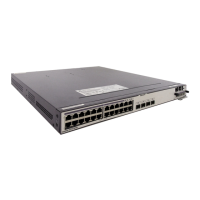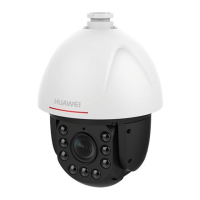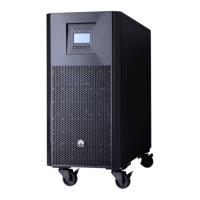Huawei Proprietary and Confidential
Copyright © Huawei Technologies Co., Ltd.
2.7 Stack Merge
As shown in Figure 2-10, two stable stacks are merged into one stack. The superior switch
between the master switches of the two stacks is selected as the master switch of the new
stack. The original stack containing the new master remains the original device roles and
configurations, and services in this stack are not affected. Switches in the other stack restart
and join the new stack as slave switches. Then the master switch assigns new stack IDs to the
restarted switches and synchronizes configurations to the switches. Services on these switches
are interrupted in this period.
Figure 2-10 Stack merge
The process of merging two stacks is similar to the process of adding a member switch as
shown in Figure 2-11. The master switches of the original two stacks compete the master of
the new stack. Member switches in the stack whose master switch fails the master competition
join the new stack. For details, see the process of adding a member switch.

